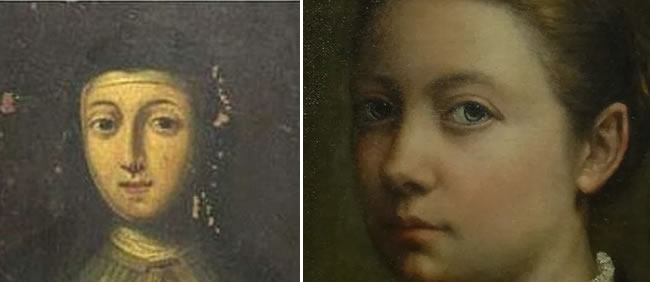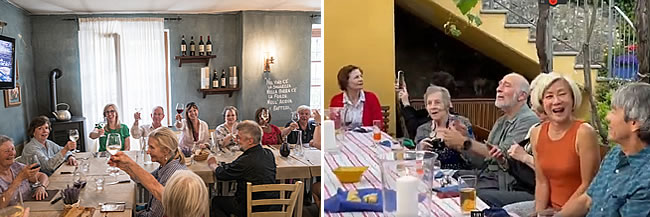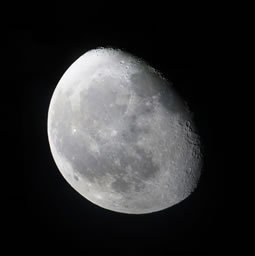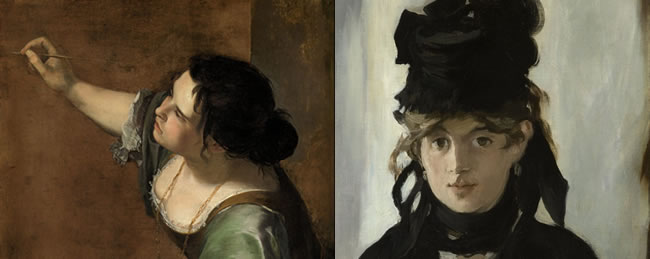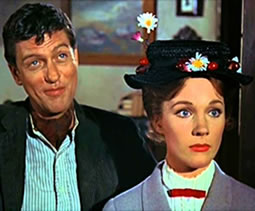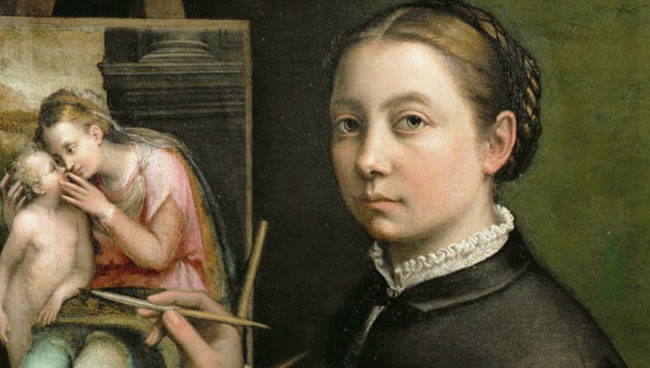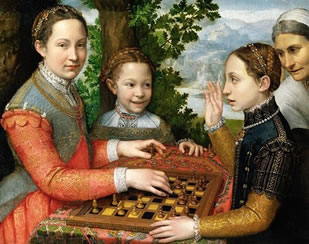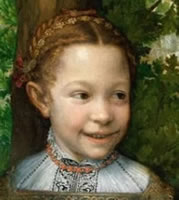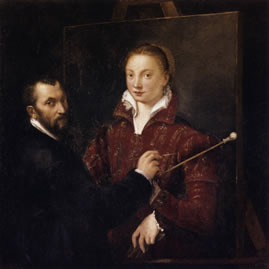Current availability of Watermill Painting courses
As we said above, some 270 people have already booked into our 2024 creative courses. You will see from the list below that some of the courses already fully booked, but don’t despair, there are often cancellations, so if you’re doing a particular tutor, or, particular date, please get in touch via the Watermill’s Contact Form and we’ll put you on a waiting list.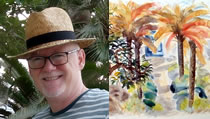
Carl March
20-27 April 2024 - 5 or 6 places left
Drawing and watercolours en plein air
To learn more about Carl and his course at the mill, please visit the 2024 Tutor Profile Page.
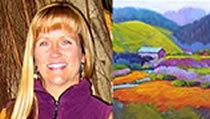
Maggie Renner Hellmann
25 May - 1 June 2024 - fully booked, waiting list open
‘Colourful & Expressive Oil & watercolour’ (also Travel sketching, acrylics, and pastel)
To learn more about Maggie and her course at the mill, please visit the 2024 Tutor Profile Page.
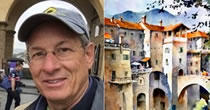
Randy Hale
8 - 15 June 2024 - 2 places left
Watercolour
To learn more about Randy and his course at the mill, please visit the 2024 Tutor Profile Page.
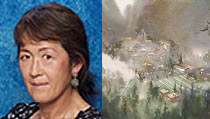
Keiko Tanabe
15 - 22 June 2024 - 2 or 3 places left
Watercolours
To learn more about Keiko and her course at the mill, please visit the 2024 Tutor Profile Page.
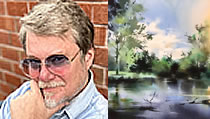
Michael Solovyev **NEW WATERMILL TUTOR**
22 - 29 June 2024 - fully booked, waiting list open
‘Atmospheric Landscape in Watercolour: Studio/Plein Air’
To learn more about Michael and his course at the mill, please visit the 2024 Tutor Profile Page.
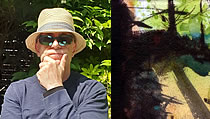
Paul Talbot-Greaves
29 June – 6 July 2024 - fully booked, waiting list open
Watercolour
To learn more about Paul and his course at the mill, please visit the 2024 Tutor Profile Page.
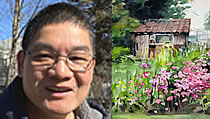
Yong Chen **NEW WATERMILL TUTOR**
6 - 13 July 2024 - fully booked, waiting list open
Watercolour
To learn more about Yong and his course at the mill, please visit the 2024 Tutor Profile Page.
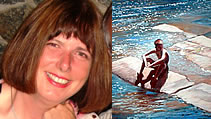
Sue Ford
13 – 20 July 2024
Watercolours - fully booked, waiting list open
To learn more about Sue and her course at the mill, please visit the 2024 Tutor Profile Page.
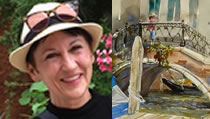
Pamme Turner
24 - 31 August 2024 - fully booked, waiting list open
Watercolour and gouache
To learn more about Pamme and her course at the mill, please visit the 2024 Tutor Profile Page.
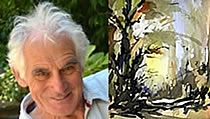
Mike Willdridge
7 - 14 September 2024 - fully booked, waiting list open
Watercolour and drawing (also gouache and acrylics)
To learn more about Mike and his course at the mill, please visit the 2024 Tutor Profile Page.
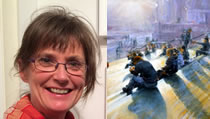
Rebecca de Mendonça
14 - 21 September 2024 - fully booked, waiting list open
Pastels
To learn more about Rebecca and her course at the mill, please visit the 2024 Tutor Profile Page.
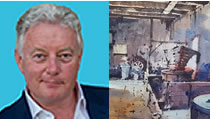
Tim Wilmot
28 September - 5 October 2024 - fully booked, waiting list open
Watercolours
To learn more about Tim and his course at the mill, please visit the 2024 Tutor Profile Page.
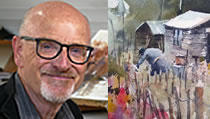
Grahame Booth
5 - 12 October 2024 - fully booked, waiting list open
Watercolours
To learn more about Grahame and his course at the mill, please visit the 2024 Tutor Profile Page.
A preview of our 2025 painting courses (they’re filling up already!)
As our 2024 creative courses are pretty full (though there are often cancellations and if you’re keen to come this year, please see above) we have published a Preview for next year’s (2025) courses on our website a little earlier than usual. And, thanks to the reputation of our tutors and their enthusiasm for the Watermill, we have already filled some 40 places for 2025.
You can see the Previews by clicking here.
And there is an extra bonus: if you reserve your place on a 2025 course before 1 September this year, we will give it to you at the 2024 price.
Our inspirational 2025 painting courses
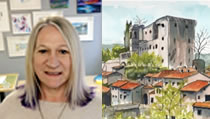
Eunice Friend **NEW WATERMILL TUTOR**
26 April - 3 May 2025 - 5 or 6 places left
Ink and watercolours
To learn more about Eunice and her course at the mill, please visit the 2025 preview page.
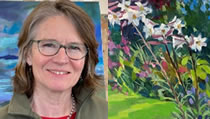
Penelope Anstice **NEW WATERMILL TUTOR**
3 - 10 May 2025 - still plenty of places
Watercolours and oils
To learn more about Penelope and her course at the mill, please visit the 2025 preview page.

Randy Hale
10 - 17 May 2025 - 5 or 6 places left
Watercolours
To learn more about Randy and his course at the mill, please visit the 2025 preview page.

Maggie Renner Hellman
24 - 31 May 2025 - still plenty of places
Colourful & expressive oil & watercolour’ (also travel sketching, acrylics, and pastel)
To learn more about Maggie and her course at the mill, please visit the 2025 preview page.
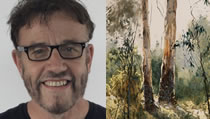
Herman Pekel
7 - 14 June 2025 - still plenty of places
Watercolours (also oils and gouache)
To learn more about Herman and his course at the mill, please visit the 2025 preview page.
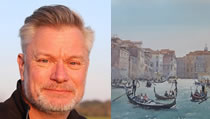
James Willis
14 - 21 June 2025 - still plenty of places
Watercolours
To learn more about James and his course at the mill, please visit the 2025 preview page.
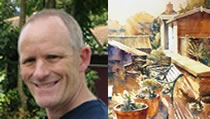
Paul Weaver **NEW WATERMILL TUTOR**
28 June - 5 July 2025 - still plenty of places
Watercolours
To learn more about Paul and his course at the mill, please visit the 2025 preview page.

Paul Talbot-Greaves
16 - 23 August 2025 - still plenty of places
Watercolours (and acrylics)
To learn more about Paul and his course at the mill, please visit the 2025 preview page.
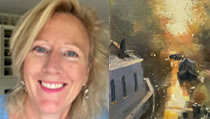
Mellissa Wishart **NEW WATERMILL TUTOR**
23 - 30 August 2025 - still plenty of places
Oils and acrylics (and watercolours)
To learn more about Mellissa and her course at the mill, please visit the 2025 preview page.
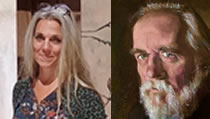
Marie Levin **NEW WATERMILL TUTOR**
30 August - 6 September 2025 - still plenty of places
Portrait painting in oils and tempura
To learn more about Marie and her course at the mill, please visit the 2025 preview page.
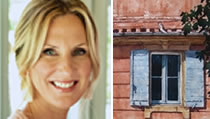
Crystal Beshara **NEW WATERMILL TUTOR**
6 - 13 September 2025 - s5 or 6 places left
Travel journalling in ink and watercolours (and gouache)
To learn more about Crystal and her course at the mill, please visit the 2025 preview page.
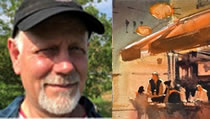
Gary Tucker **NEW WATERMILL TUTOR**
20 - 27 September 2025 - still plenty of places
Watercolours
To learn more about Gary and his course at the mill, please visit the 2025 preview page.
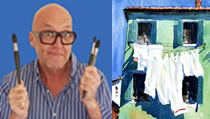
Charles Sluga
27 September - 4 October 2025 - still plenty of places
Watercolours
To learn more about Charles and his course at the mill, please visit the 2025 preview page.
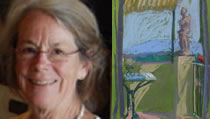
Mary Padgett
4 - 11 October 2025 - still plenty of places
Pastels (and other portable media)
To learn more about Mary and her course at the mill, please visit the 2025 preview page.

Grahame Booth
11 - 18 October 2025 - still plenty of places
Watercolours
To learn more about Charles and his course at the mill, please visit the 2025 preview page.
Just a few spaces left on this year’s knitting courses
We have five knitting courses at the Watermill this year and they have all proved very popular. So much so that we have very few spaces left.
On Susan Crawford’s course, the Brunelleschi bedroom is free (either for single occupancy or for a couple sharing the king-size double bed). On Louisa Harding’s week, The Vasari Suite (for a couple or two friends sharing, but at this stage we are happy with single occupancy). On Sylvia Watts-Cherry's week, the Fra Angelico is available
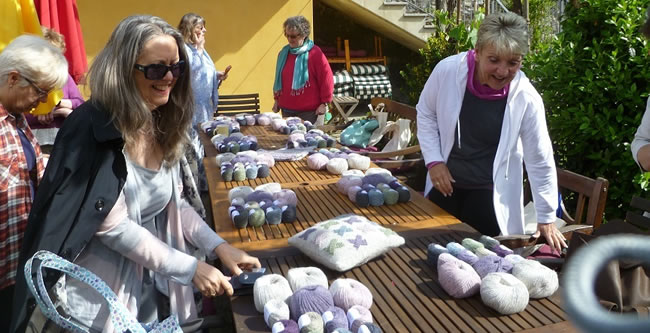
And as ever, your knitting week at the Watermill will combine expert tuition, like-minded company, wonderful food and the delightful ambience of the Watermill, it's gardens and riverside walks, and outings into the surrounding unspoiled Tuscan countryside of Lunigiana. We will take you to knit in stunning locations (a castle, a convent, a hilltop village, market day in a walled mediaeval town) and an excursion to Lucca or the Cinque Terre.
Among the many commendations for last year’s knitting courses:
“I just want to thank all of you for a week that far exceeded any of my expectations. Your gracious hospitality seemed effortless and daily excursions were wonderful. The Watermill felt like home except I’m so spoiled now it will be hard to adjust when I’m on my own. You have thought of everything possible to make for a memorable week.”
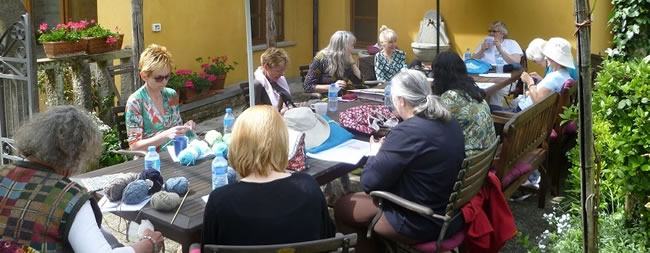
“Spending a week every year since 2017 at The Watermill has been such a pleasure and something to always look forward to. Bill, Lois and Karsten are such wonderful hosts! I've joined several knitting courses and one Italian language course which were all great fun and relaxing. And the food, especially on the days that Lois is cooking, is just something else to look forward to! The rooms are lovely and all have air-conditioning. The places we visit each year remain spectacular even after so many times, they are well worth it.”
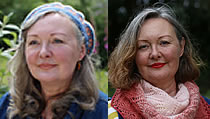
Susan Crawford **NEW WATERMILL TUTOR**
27 April - 4 May 2024 - one or two places left
Knitting and La Bella Vita
To learn more about Susan and her course at the mill, please visit her 2024 Tutor Profile Page.
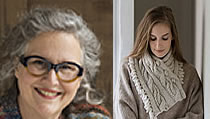
Norah Gaughan
4 - 11 May 2024 - fully booked, waiting list open
Knitting and La Bella Vita
To learn more about Norah and her course at the mill, please visit her 2024 Tutor Profile Page.
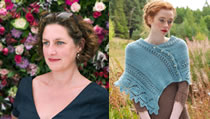
Louisa Harding
11 - 18 May 2024 - one or two places left
Knitting and La Bella Vita
To learn more about Louisa and her course at the mill, please visit her 2024 Tutor Profile Page.
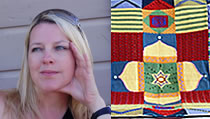
Debbie Abrahams
18 - 25 May 2024 - fully booked, waiting list open
Knitting and La Bella Vita
To learn more about Debbie and her course at the mill, please visit her 2024 Tutor Profile Page.
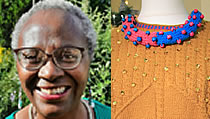
Sylvia Watts-Cherry **NEW WATERMILL TUTOR**
1 - 8 June 2024 - one or two places left
Knitting and La Bella Vita
To learn more about Sylvia and her course at the mill, please visit her 2024 Tutor Profile Page.
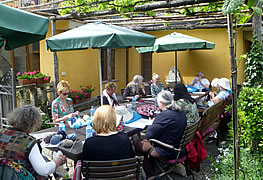
Don't forget your partner!
And don’t forget that your friend or partner doesn’t need to participate in the creative course, whether it’s painting, language or writing.
We offer them a range of Alternative activities for partners on all our courses, as well as a generous £GBP 250 discount if they share a room with you.
Our convivial 2025 knitting courses
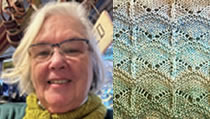
Linda Daniels**NEW WATERMILL TUTOR**
17 - 24 May 2025 - 2 or three places left
Knitting and La Bella Vita
To learn more about Linda and her course at the mill, please visit the 2025 preview page.
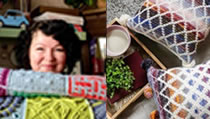
Anna Nikipirowicz**NEW WATERMILL TUTOR**
31 May - 6 June 2025 - still plenty of places
Crochet and La Bella Vita
To learn more about Anna and her course at the mill, please visit the 2025 preview page.
Perhaps the greatest novel of the 20th century?
For some years now, Lois and her female friends have belonged to a reading group in Florence, meeting once a month or so discuss a book and chat over lunch. They didn’t invite any boys, so Bill’s friend Mac decided to redress the balance a few months ago -- and half-a-dozen or so distinguished men (we like to think so) now meet regularly for a literary chat. They have read good books, indifferent books and downright bad books.
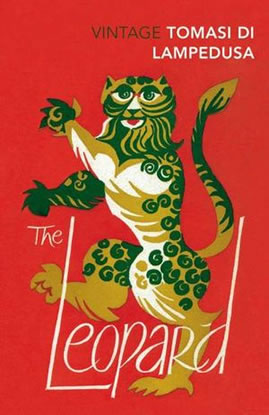
Last month we discussed Bill’s favourite book, The Leopard, by Giuseppe Tomasi di Lampedusa, in a wonderful translation by Archibald Colquhoun. It begins in Sicily in 1861, as Garibaldi and his Redshirts have just invaded, and it charts the decline and fall of the Bourbon monarchy, and of the old aristocracy, its values and its manners. The protagonist is The Leopard himself, Fabrizio, Prince of Salina, an unforgettable character, more real than many people you’ve actually met. He has an aristocratic dignity, but a vision of himself, of his country and of the unfolding events, which is free of illusion and expressed with unflinching honesty.
Although it is a historical novel, it has observations and insights that are as cogent today as they were a century and a half ago. If you haven’t read it, please do so: you are in for a treat; if you have, it’s well worth reading again.
The writing is lyrical and evocative, and above all honest and open-eyed. The tone is nostalgic, tinged with melancholy, sharpened by irony, lightened by humour. Many people have hailed the book as a masterpiece, and Bill is one of them, agreeing with LP Hartley that it is perhaps the greatest novel of the 20th century.
Just a few quotes to give you the quality of the prose (and of the translation)...
Here’s a description of the food at a ball in Palermo in the 1860s: “... the appearance of those monumental dishes of macaroni was worthy of the quivers of admiration they evoked. The burnished gold of the crusts, the fragrance of sugar and cinnamon they exuded, were but preludes to the delights released from the interior when the knife broke the crust; first came a mist laden with aromas, then chicken livers, hard-boiled eggs, sliced ham, chicken, and truffles in masses of piping hot, glistening macaroni, to which the meat juice gave an exquisite hue of suede.”
And this description of the landscape as The Leopard travels in his carriage with his confessor, Father Pirrone: “Now the road was crossing orange groves in flower, and the nuptial scent of the blossoms absorbed the rest as a full moon does a landscape; the smell of sweating horses, the smell of leather from the carriage upholstery, the smell of Prince and the smell of Jesuit, were all cancelled out by that Islamic perfume evoking houris and fleshly joys beyond the grave.”
Enjoy!
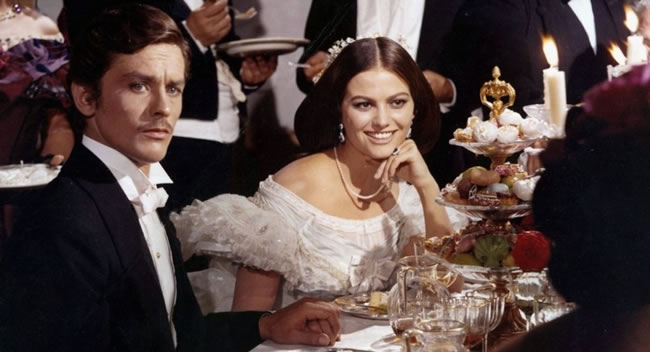
Alain Delon and Claudia Cardinale in Luchino Visconti’s The Leopard:
their marriage symbolises the merging of the old aristocracy and the nouveau riche.
The mysteries of the semi-colon

Columbia Journalism Review
It feels like a punctuation mark that has not grown up. Not a fully fledged colon, nor a decisive full stop, nor a kindly comma which enables us to draw breath, but an uneasy adolescent amalgam of the latter two. And like many an adolescent it is difficult to get to know and it’s often lying about in the wrong place. Like an adolescent, too, this seemingly insignificant punctuation mark frightens the life out of many adults, who have little or no idea what to do with it.
It reminds Bill of the Schleswig-Holstein Question, a complex, long-running 19th and early 20th century dispute between Germany and Denmark over two duchies on their borders. The Victorian British Prime Minister Lord Palmerston famously remarked: "Only three people have ever really understood the Schleswig-Holstein business – the Prince Consort, who is dead – a German professor, who has gone mad – and I, who have forgotten all about it."
The Mirriam-Webster dictionary’s online Grammar section addresses the issue thus: “The semicolon is the colon's quirkier sibling. While the colon is simply two dots stacked: the semicolon is a dot hovering over a comma;
"The semicolon does jobs that are also done by other punctuation marks, but puts its own spin on the task. Like a comma, it can separate elements in a series. Like a period or colon, it often marks the end of a complete clause(that is, a sentence part that has its own subject and verb). And like a colon, it signals that what follows it is closely related to what comes before it.”
The sum up, therefore: “Semicolons separate independent clauses that are related in meaning and separate items in a list when those items themselves are long or include commas. For example, this summary could say ‘Semicolons are useful; they show that clauses are related in meaning.’”
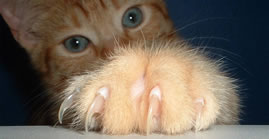
Photo by AnasiZ. Public domain
Of course, it’s not quite as simple as that; the Mirriam-Webster article goes on to talk about joining conjunctions, adverbs in the second clause, introduction expressions, and other grammatical esoterica, which you can read there, if you are so inclined.
We’ll leave you with a one-line mnemonic question: “What is the difference between a semicolon and a cat?”
The answer: “A semicolon is a pause for a clause; a cat has paws with claws.”
Writing the stories of your life
While concentrating on autobiography and memoir, the course gives insights and advice for writing in any genre.) We have inspirational settings, interesting characters, rich history, convivial conversation with other aspiring writers, but above all we have Jo Parfitt.
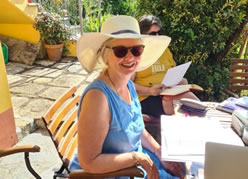
Jo Parfitt is an author, journalist, teacher, blogger, conference speaker and poet. She has published 32 books herself, has helped more than 250 authors get into print and more than 2,000 people to begin writing. Jo's a compassionate, inspiring, and encouraging teacher: her motto is 'sharing what I know to help others to grow'.
The Write Your Life Stories creative writing course is designed to help you produce your best work, to find your true writer's 'voice' and to write authentically. Among other things, you’ll discover the secret of SPICE, the seven steps to writing life stories. Jo says: "The course at the Watermill will provide a safe haven in which to unlock your creativity, write from your heart and hone your writing craft. You will be empowered to write in a compelling way, bringing your experiences to life."
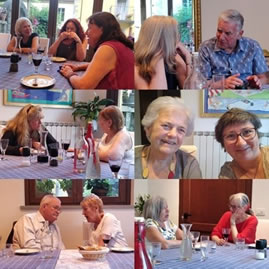
Enjoying creative conviviality
on Jo’s watermill writing course
The workshop will include several methods and genres and is perfect for anyone wanting to write about their own lives for an effective journal, memoir or blog. If you would enjoy an injection of inspiration in a calm and supportive environment, this course is for you. It is appropriate for students of any level.
Here are a couple of comments from guests on Jo’s previous courses at the Watermill: “The most magical trip to Tuscany, which will stay with me forever!” “It is a very special and beautiful place, and everything was organised so perfectly. Jo is a great tutor, and we all had an amazing time.”
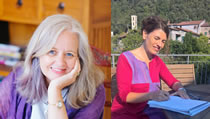
Jo Parfitt
21 – 28 September 2024 - fully booked, waiting list open
5 – 12 July 2025 - still plenty of places
Write your life stories
To learn more about Jo and her course at the mill, please visit please visit the 2024 Tutor Profile Page.
Learn Italian from the Italians in in our unique language week
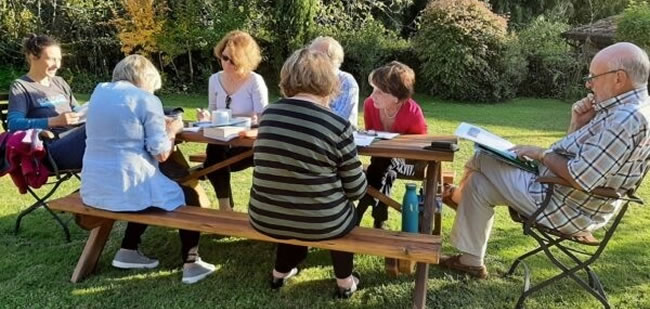
Soaking up the Italian language and the evening sun in the Watermill walled garden
We have seven bookings for our Italian Language week next October, so we have room for half a dozen more. The Bronzino, Brunelleschi, Fra Angelico and Uccello bedrooms and The Vasari Suite.
The Watermill has teamed up again with Giulia Balestri for a week in which you can learn Italian in the most natural and enjoyable way. Your immersion into the language and culture of real Italians will be customised for you, to suit your curiosity and your interests. Here is what some of the participants on last year’s course had to say:
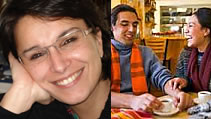 Giulia Balestri
Giulia Balestri
19 - 26 October 2024 - 4 or 5 places left
18 - 25 October 2025 - still plenty of places
Learning Italian with the Italians
For more details on Giulia's 2024 course, please visit the 2024 Tutor programme page.
Everything's included in your watermill painting holiday, creative writing holiday, knitting week or Italian Language course
Don’t forget that everything is included in the cost of a painting holiday, writing, knitting, or language holiday: tuition, accommodation (including all linen and towels), pre-dinner aperitifs, all meals and local transportation (including transfers to Pisa airport; an excursion by train to visit the ancient walled city of Lucca or the stunning seaside villages of the Cinque Terre).
All you have to do is to get to Pisa airport and we do the rest.
Whether you're travelling alone or with a partner you can be sure of a warm welcome, and that you'll be well looked after. We have built our reputation on the comfort of the mill and the care we provide.
We very much look forward to welcoming you to the mill and, for those of you who have already tasted the many delights at The Watermill at Posara, we look forward to welcoming you back.
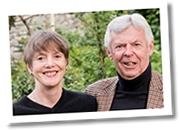
With very best wishes a tutti

Lois and Bill Breckon
